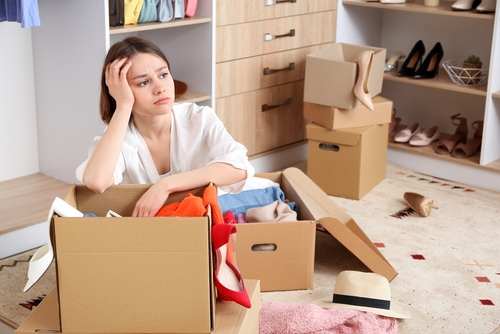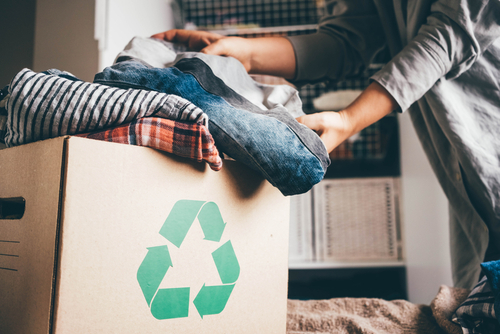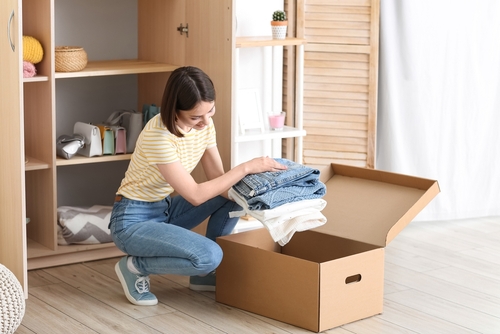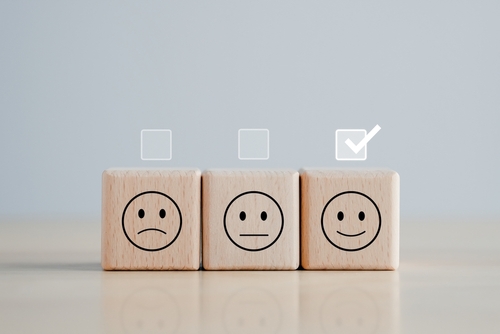May 24, 2024 - Benjamin Ehinger
Decluttering Tips for Hoarders: Effective Strategies for Simplifying Your Space
CALL NOW 844-762-8449
Decluttering can be a liberating but challenging journey, especially for individuals dealing with hoarding behaviors. Recognizing the need to declutter is an important first step towards making positive changes in your living space and life. Hoarding is more than just an accumulation of items; it is often connected to underlying anxiety and emotional attachment to possessions.
Beginning the process of decluttering might seem overwhelming, but breaking it into manageable steps can help ease anxiety. Focus on setting attainable goals and tackling one small area at a time, which can help build confidence and momentum. As progress is made, it is essential to keep the mindset aimed at maintaining a clutter-free, serene environment. You might need to get a local dumpster rental to help with the many items a hoarder needs to toss out.
 Effective decluttering is crucial in creating a more organized and manageable living space, especially for hoarders. Begin with clear, actionable steps that reduce the overwhelming feeling of tackling the clutter.
Effective decluttering is crucial in creating a more organized and manageable living space, especially for hoarders. Begin with clear, actionable steps that reduce the overwhelming feeling of tackling the clutter.
 Building momentum begins with small victories that boost your confidence, helping you to establish a self-reinforcing cycle of progress. As you witness your accomplishments, even if minor, your belief in your ability to declutter grows.
Building momentum begins with small victories that boost your confidence, helping you to establish a self-reinforcing cycle of progress. As you witness your accomplishments, even if minor, your belief in your ability to declutter grows.
 When decluttering, consider the impact your unwanted items can have outside your home. Your possessions can benefit others or be recycled sustainably, reducing the need for new resources.
When decluttering, consider the impact your unwanted items can have outside your home. Your possessions can benefit others or be recycled sustainably, reducing the need for new resources.
 Once you’ve tackled the clutter, maintaining a clean and orderly home requires a proactive approach. Here’s how you can ensure your space remains clutter-free.
Once you’ve tackled the clutter, maintaining a clean and orderly home requires a proactive approach. Here’s how you can ensure your space remains clutter-free.
 When addressing hoarding, it’s essential to recognize that decluttering is just the beginning. Delving into the deeper transformational aspects can greatly enhance your mental well-being and transform your physical space.
When addressing hoarding, it’s essential to recognize that decluttering is just the beginning. Delving into the deeper transformational aspects can greatly enhance your mental well-being and transform your physical space.
Key Takeaways
- Recognizing hoarding tendencies is crucial for starting the decluttering process.
- Small, manageable steps can ease the decluttering journey for hoarders.
- Sustaining a decluttered environment is as important as the initial cleanup.
Understanding Hoarding Disorder
Before delving into decluttering strategies, it’s crucial to grasp the complexity of hoarding disorder, a recognized mental health condition characterized by an intense difficulty parting with items, regardless of their actual value.Identifying Hoarding
To identify hoarding disorder, watch for persistent accumulation of possessions despite a lack of space or need, resulting in congested living areas. Your living space might become unusable for intended purposes due to the high volume of items. Signs include an inability to organize possessions, distress at the thought of discarding items, and a home environment that prevents normal use.Psychological Implications
The psychological implications of hoarding are profound and often include severe anxiety, emotional attachment to objects, and distress at the thought of letting go of them. This disorder may correlate with trauma or stressful life events, leading to patterns of behavior that act as a coping mechanism to soothe negative emotions. It can also be associated with indecisiveness, perfectionism, avoidance, and disorganization.Health and Safety Concerns
Hoarding poses significant health and safety concerns. This includes increased risk of falls, fire hazards, and unsanitary conditions that can lead to health complications. The excessive accumulation may cause isolation due to social embarrassment or physical barriers to having visitors. Safety can be compromised as certain areas of the home may become inaccessible, leading to dangerous living conditions.Preparing to Declutter
Before embarking on your decluttering journey, it’s crucial to lay a solid foundation. This involves setting clear targets, devising a practical plan, and ensuring you have all the necessary tools at your disposal.Establishing Goals
Begin by setting specific goals for your decluttering process. Consider what you aim to achieve in each area of your home. Whether it’s creating more space in the kitchen or ensuring the living room is more inviting, define your objectives. This clarity will guide your efforts and provide motivation. For example, write down the end state of each room and visualize the transformation.Crafting a Decluttering Plan
Start small to build momentum—a focused approach prevents feeling overwhelmed. Create a prioritized list that outlines the sequence of spaces you’ll tackle. Incorporate specific decluttering tips such as setting a timer for short, concentrated sessions to maintain energy and progress. Decide on a strategy where each item is evaluated, and its fate decided—keep, discard, or donate.Gathering Supplies
Before you dive in, gather all necessary supplies to execute your plan efficiently. You’ll need trash bags for waste, boxes for items to donate, and storage containers for what you decide to keep. Ensure to have labels and markers to organize categories clearly. Having these supplies ready reinforces a productive mindset and streamlines the decluttering process.Practical Decluttering Tips
 Effective decluttering is crucial in creating a more organized and manageable living space, especially for hoarders. Begin with clear, actionable steps that reduce the overwhelming feeling of tackling the clutter.
Effective decluttering is crucial in creating a more organized and manageable living space, especially for hoarders. Begin with clear, actionable steps that reduce the overwhelming feeling of tackling the clutter.
Categorizing Possessions
Start by sorting your items into distinct categories such as “keep,” “donate,” “sell,” or “trash.” This straightforward method helps you visually assess what you have and decide on the next steps for each item. Organizing items into categories also sets the stage for better storage solutions moving forward.The Four-Box Method
Utilize the Four-Box Method to simplify decision-making. Have four boxes or areas labeled: Must Keep, Give Away/Sell, Store, and Trash. This tactile process forces you to make immediate decisions, reducing decision fatigue and making the task of decluttering more manageable.Decision Making Strategies
Implement these strategies to help with deciding what stays and what goes:- Use it or lose it: If you haven’t used something in over a year, it’s likely you don’t need it.
- One in, one out: When a new item comes into your home, commit to letting one item go.
- Set limits: Allocate specific storage areas for categories of items and don’t allow overflow.
Handling Emotional Attachment
The journey to declutter a hoarder’s home is deeply intertwined with managing the complex emotions tied to possessions. Your ability to navigate your emotional attachment to items, especially those with sentimental value, is critical in making sustainable progress.Dealing with Sentimental Items
- Identify: Start by isolating sentimental items that elicit strong emotions. It’s common to feel a deep connection to objects that invoke memories of people, places, or events. Being able to pinpoint these items is a crucial first step.
- Acknowledge: Acknowledge the emotions linked to these possessions. Whether it’s joy, sadness, or fear, recognizing what you feel is an important part of the process.
- Assess: Then, evaluate their importance objectively. Ask yourself:
- Does this item have a functional purpose in my life?
- Is there a way to honor the memory or emotion without the physical item?
- Could someone else find more value or joy from this item?
- Decision-making: After assessment, make a decision based on your present and future well-being—keep a few cherished items that bring genuine happiness and consider letting go of others that might be hindering your space and mental peace.
Overcoming Emotional Barriers
Understand the Fear: Fear is a significant barrier in the decluttering process. This might manifest as a fear of losing memories, fear of change, or fear of making a mistake by discarding something important. Understanding that fear is a natural response to the unknown can help in addressing its root. Techniques to Overcome Fear:- Exposure: Gradually expose yourself to the decluttering process by beginning with less emotionally charged items. This can help build confidence and diminish the fear associated with decluttering.
- Support Systems: Lean on friends, family, or professionals who can provide an objective viewpoint and emotional support.
- Visualize: Visualize your space after decluttering. Imagine the freedom and peace of mind that comes from living in a tidy and orderly environment. This visualization can often provide the emotional strength needed to let go.
- Celebrate Progress: Celebrate small victories along the way to stay motivated. Change isn’t always easy, but recognizing individual progress can help mitigate emotions of fear and loss.
Building Momentum and Confidence
 Building momentum begins with small victories that boost your confidence, helping you to establish a self-reinforcing cycle of progress. As you witness your accomplishments, even if minor, your belief in your ability to declutter grows.
Building momentum begins with small victories that boost your confidence, helping you to establish a self-reinforcing cycle of progress. As you witness your accomplishments, even if minor, your belief in your ability to declutter grows.
Starting with Small Wins
Start small to avoid feeling overwhelmed. You don’t have to tackle a whole room—just focus on one shelf or drawer. Complete this task, take a break, and celebrate the win. This strategy sets the stage for progressively taking on larger decluttering tasks. By being ruthless in these small areas, quickly deciding what to keep or discard, your confidence in making decisions will strengthen. An example of easing into the process is to declutter for five minutes at a time, as recommended by The Tiny Life.Maintaining Progress
To keep the momentum going, establish a simple, repeatable routine. After every small win:- Pause and appreciate the cleared space.
- Decide when to tackle the next small section.
- Prepare for this next task mentally and physically.
Adopting a Minimalist Mindset
Transitioning to a minimalist lifestyle involves a shift in perspective, understanding that happiness and fulfillment come from experiences and relationships rather than possessions.Learning to Live with Less
Minimalism is about prioritizing what truly matters and letting go of the excess that distracts from it. Begin by evaluating your living space and identifying items that are not essential to your daily life or well-being. Start small, choosing one area at a time to declutter. Remember that each item you remove helps to simplify your surroundings, making room for freedom and clarity. Keep track of your progress with a simple list or chart to maintain motivation.Redefining Needs Versus Wants
Understanding the difference between needs and wants is crucial to adopting a minimalist mindset. Needs are items essential for living such as a roof over your head and food. Wants, on the other hand, are items that enhance comfort or pleasure, like a decorative lamp or an extra pair of shoes. Draw two columns to categorize your belongings:- Needs:
- Shelter
- Basic clothing
- Nutritional food
- Wants:
- Decorative items
- Gadgets with overlapping functions
- Excessive amounts of clothing
Recycling and Donating
 When decluttering, consider the impact your unwanted items can have outside your home. Your possessions can benefit others or be recycled sustainably, reducing the need for new resources.
When decluttering, consider the impact your unwanted items can have outside your home. Your possessions can benefit others or be recycled sustainably, reducing the need for new resources.
Finding New Homes for Items
Identify potential donation centers where your items can be appreciated. Your local thrift stores, shelters, and charitable organizations often welcome donations. Take time to sort your items into categories such as clothing, books, and small appliances. For each category, research organizations that specialize in these types of donations; for instance, donate books to a library or a school, and clothes to a homeless shelter.- Clothing: Goodwill, The Salvation Army
- Furniture: Habitat for Humanity Restore
- Electronics: e-Stewards Certified Recyclers
- Books: Libraries, schools, literacy programs
Sustainable Decluttering
Recycling is crucial in managing your decluttered items responsibly. Check with your local recycling program for specific guidelines, since recycling practices vary by location. Electronics, batteries, and certain plastics require special handling, so look for facilities that offer these services.- Electronics: Best Buy, Staples
- Batteries: Battery recycling centers, hazardous waste facilities
- Plastics: Refer to your local recycling symbols and regulations
Seeking Professional Help
Decluttering for hoarders can be an emotional and challenging process. When overwhelmed, seeking out professionals who specialize in organizing and counseling can provide much-needed support and guidance.When to Call a Professional
If you find yourself unable to make substantial progress on your own, or the state of your home is beginning to negatively impact your quality of life, it’s time to call a professional. Recognizable signs that professional help is needed include feeling emotional distress when attempting to declutter, a significant impact on daily living, and health or safety concerns in your living space.Benefits of a Professional Organizer
Working with a professional organizer offers several advantages. Firstly, they bring a neutral perspective and practical strategies to effectively organize your space. They are trained to work compassionately and efficiently, helping you to make decisions about your possessions without judgment. Furthermore, a professional can tailor organizing systems and routines to suit your specific needs, which makes maintaining a clutter-free environment more manageable for the long term.Staying Decluttered
 Once you’ve tackled the clutter, maintaining a clean and orderly home requires a proactive approach. Here’s how you can ensure your space remains clutter-free.
Once you’ve tackled the clutter, maintaining a clean and orderly home requires a proactive approach. Here’s how you can ensure your space remains clutter-free.
Establishing Daily Routines
Set up daily habits that promote organization. Allocate 15 minutes each day to review and sort mail, clothes, or any items that typically accumulate clutter. Consistency in these daily tasks will gradually transform your home into a tidy sanctuary. The FlyLady method suggests shining your sink each night before bed, a simple yet effective routine for keeping on top of kitchen mess.Avoiding Re-Acquisition
After successful decluttering, resist the temptation of filling up your space again. Adhere to the “One In, One Out” Rule, meaning for every new item brought into your home, one must go. This strategy is especially important for ex-hoarders who may struggle with the urge to reacquire.Embracing Tidiness
Finally, embrace the advantages of a tidy home. Approach organization with a positive mindset; view it as an opportunity to refresh and simplify your life. Utilize decluttering strategies, such as the Three-Box Method when organizing, ensuring every item has its rightful place. Remember, a decluttered home is more than just visually pleasing—it’s a step towards peace of mind and efficiency.Impact on Relationships
Hoarding can significantly strain your interpersonal connections, often leading to tension and misunderstanding with those closest to you. A clutter-filled home can become a source of continuous conflict and distance you from family members.Communicating with Family Members
Effective communication is vital when dealing with the effects of hoarding on relationships. It’s important to have open, non-judgmental conversations with your family members about your struggle with hoarding. Be honest about your feelings and listen to theirs. Here are a few points to remember:- Empathize: Try to understand their perspective and concerns about the clutter.
- Set Boundaries: Discuss what areas of the home can be decluttered with mutual agreement to respect each other’s space and possessions.
- Ask for Help: It’s okay to seek support from family members, but be clear about the kind of help that would be most beneficial for you.
Involving Kids and Spouse
Involving your kids and spouse in the decluttering process can be challenging but also rewarding. Not only does it teach responsibility and organization, but it also can be a bonding experience when approached with care:- Assign Age-Appropriate Tasks: Give your kids simple sorting activities to turn decluttering into a fun game.
- Work as a Team: Plan decluttering sessions where everyone, including your husband, contributes, turning a daunting task into a group effort.
- Celebrate Small Wins: Acknowledge and celebrate progress, which can boost morale and make the process enjoyable for all involved.
Beyond Decluttering
 When addressing hoarding, it’s essential to recognize that decluttering is just the beginning. Delving into the deeper transformational aspects can greatly enhance your mental well-being and transform your physical space.
When addressing hoarding, it’s essential to recognize that decluttering is just the beginning. Delving into the deeper transformational aspects can greatly enhance your mental well-being and transform your physical space.
Enhancing Mental Well-being
Addressing the root cause of hoarding is crucial for your long-term mental health. While removing clutter brings immediate relief, understanding the psychological factors that contribute to hoarding can lead to sustainable change and prevent future accumulation. Embrace practices that promote mindfulness and self-reflection, which can bolster your confidence and provide a sense of control over your environment.Transforming Physical Space
Transforming your space is about more than just clearing clutter—it’s about reimagining and rejuvenating your environment to create a functional and enjoyable living area. Once clutter is removed, consider the layout and purpose of each room. Invest time in organizing and decorating to foster a sense of pride and fun in your home. This renewed physical space can reinforce positive changes and support your mental well-being.Frequently Asked Questions
The following subsections aim to address common concerns and provide direct guidance for individuals struggling with hoarding tendencies who wish to begin the decluttering process.Where should a hoarder begin when they want to start decluttering?
Begin by targeting a small, manageable area such as a single drawer or cabinet. This approach helps to avoid feeling overwhelmed and allows for quick wins, creating momentum. For more detailed guidance, consider following a comprehensive decluttering guide.What is a systematic approach to decluttering for a person who hoards?
A systematic approach involves establishing a sorting system with categories like “keep,” “donate,” “recycle,” and “throw away.” Start with one room and systematically work through each item, one by one. Visit Clever Girl Finance for tips that fit such a method.How can someone who hoards clothes start to overcome their hoarding issues?
Begin by sorting clothes into specific categories and decide what to keep based on frequency of use and emotional attachment. Tackling one category at a time prevents decision fatigue and aids in maintaining focus. For more insight, The Tiny Life offers advice tailored to clothes hoarding.What are some emotional strategies for hoarders to help with the decluttering process?
Emotional strategies include acknowledging the emotional attachment to items, understanding the fear of letting go, and gradually building the habit of parting with possessions. Patience and empathy towards oneself are vital throughout this journey. Storables covers more on emotional coping mechanisms.What are effective decluttering strategies tailored to seniors who hoard?
Seniors who hoard may benefit from decluttering strategies that respect sentimental attachments and focus on safety and accessibility. Breaking the process into small, non-strenuous tasks can help make decluttering more manageable. Helpful strategies can be found at Uncluttered Simplicity.What are some rapid decluttering techniques for a hoarder’s living space?
Rapid techniques include setting a timer for quick sorting sessions, focusing on discarding obvious trash first, and then moving on to items that haven’t been used in years. This method promotes immediate progress within a limited timeframe, enhancing motivation and clarity in the living space.RECENT BLOGS
Our Reviews
Glenda Lanier Prowell
1721758635
I have ordered an 11 yard dumpster to be delivered to my house.Lonier was extremely helpful and answered all my questions. The rate was very reasonable.
Cedric Smikle
1721660395
Amber was extremely professional and courteous. She answered all of my questions and even some that I didn’t know I needed to ask.
Cait Kaider
1721243051
I highly recommend Waste Removal USA for their responsiveness and how the staff work hard to provide exceptional customer service. They have done well by us and our clients. Thank you!
Easom Family
1721223306
Louiner Pierre-Louis Is awesome! Did a great job. Will definitely be using this same company for all my dumpster needs because of his awesome customer service! Thank you!!!
tabitha Vazquez
1720539988
Wonderful and fast customer service!
LATEST BLOGS






